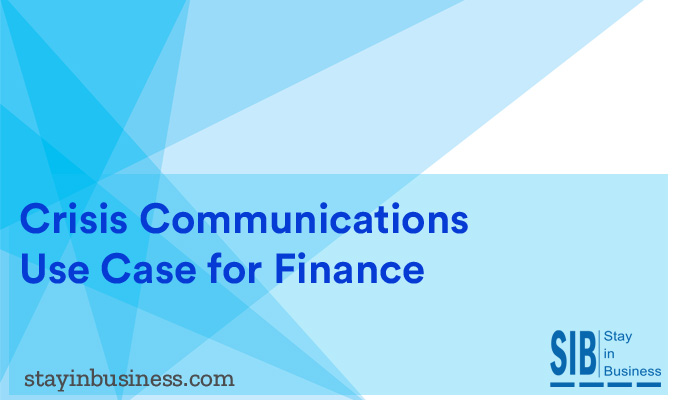
Background
A large accounting firm with a global presence detected the possibility of their security systems being compromised which could result in many millions of dollars being stolen. Investigations were underway and the local police got involved in the situation. However, other office locations around the globe needed to stay operational.
Sharing information and crisis communication capabilities became crucial during this incident. Employee personnel handling mission critical tasks had to be notified regardless of their location. Procedures for escalation needed to be automated so that backup staff members could be notified and brought online when the primary employee options were not available. These features could be tailored to the organization’s RTO and RPO targets.
Employees from various levels of seniority and were from both internal teams such as in-house investigators, as well as from external groups such as police and government agencies. Investors, stakeholders, clients, public and the media needed to be updated from time to time. This meant that the vast volumes of data that was being generated because of the incident needed to be managed efficiently. Towards this end, public relations staff from the organization’s various locations around the world could be mobilized as and when required, depending on the type of strategy the organization wanted to deploy.
The hospital’s in-house email system was inflexible and was one component in a larger facility management system. Its inherent capabilities were not suitable for crisis time communication. As a result, the system’s features and functionalities were gradually losing relevance.
Designated roles and responsibilities were automatically reassigned to alternate employees when the primary employee’s access to the task was interrupted. This way business processes could continue seamlessly while mitigation measures were simultaneously being deployed to curb the incident.
The communication requirements in such a scenario demand high levels of resiliency activities can be assigned or reassigned and confirmations or acknowledgements can be sent or received in quick time. The progress status across various workflows can also be viewed on the system in real time.
Such a solution becomes vital for the enterprise to be able to mitigate the impact of a crisis without deviating from industry standards, regulatory norms and ISO standards. Even reports can be generated to provide evidence of adherence to compliance norms through the business continuity project’s entire life cycle.
See for yourself how the application works
Witness our cloud based platform’s security capabilities in action
Play around with the software and explore its features
Compare and choose a solution that’s relevant to your organization
Consult our experts and decide on a pricing mechanism
Disasters
[carousel id=’1780′ items=’4′ items_desktop=’3′ margin_right=’5′ navigation=’false’] [item img_link=”https://www.stayinbusiness.com/wp-content/uploads/2016/02/Chemical-Spills-Discharges.jpg” href=”https://www.stayinbusiness.com/resource/disaster-recovery/chemical-spills-and-discharges/”][item img_link=”https://www.stayinbusiness.com/wp-content/uploads/2016/02/Riots-Public-Disturbances.jpg” href=”https://www.stayinbusiness.com/resource/disaster-recovery/riots-and-public-disturbances/”][item img_link=”https://www.stayinbusiness.com/wp-content/uploads/2016/02/Terrorism.jpg” href=”https://www.stayinbusiness.com/resource/disaster-recovery/terrorism/”] [item img_link=”https://www.stayinbusiness.com/wp-content/uploads/2016/02/worst-product-recall.jpg” href=”https://www.stayinbusiness.com/resource/disaster-recovery/product-recall/”] [/carousel]
